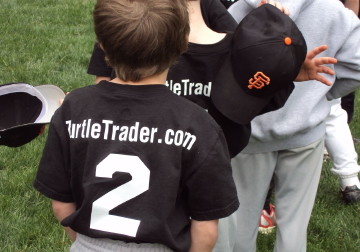Every business out there has probably been approached about a sponsorship, or included sponsorship in their marketing mix in one form or another, especially those with a consumer sales focus. But how do you make the selection of which one’s might be the most effective long-term?
Careful selection of the events, products, and people you sponsor will allow you to activate that sponsorship to benefit fully from your association. In order to make a beneficial selection, you have to know your brand inside and out, and have a good handle on some of the more “outlying” characteristics that consumers have pinned to it – not just the ones you’re broadcasting about it. Some of those alternative characteristics can make for very solid sponsorships if you pick them carefully and engage fully with all the opportunities they offer.
Many businesses don’t engage fully with the opportunities they do select, and get less-than-optimal returns as a result. This is one situation where you really do get out what you put in. Don’t stop at the logo on the sign, that’s just the beginning. Here’s ten ways to maximize the return on a sponsorship opportunity, planned or impromptu:
For Event Sponsorships:
10) Make sure to provide adequate materials to the event hosts so that all participants receive something from you at the event. Don’t short the count on the collateral, the promotional items or the literature, because that one person who gets left out will carry that impression longer and to more people than all the rest combined.
9) Be sure your brand is represented adequately, accurately and repeatedly. You’ve purchased a certain level of exposure, and most event organizers will bend over backward to help you get it, but if you don’t speak up and remind them, you may not get everything you were promised. Check everything to be sure the brand is represented in the best possible light, and that it’s reproduced at an adequate size, color fidelity and resolution to do you some good – after all, you paid for it.
8) Even if you don’t have something already created, make sure you take advantage of every portion of the sponsorship package. Most sponsorships are multi-faceted, and usually multi-media. If you don’t have elements in use already for each medium, be it flash video, print collateral, sales sheets, logo files in every possible format, bios, soundbites, banner ads, animated gifs, promotional blurbs and items, signage, banners, and other typical elements to take advantage of the whole package of opportunities, create whatever it is you’re missing. You might be the only one of the sponsors who does, in which case, guess who’s going to be the most memorable?
7) Make sure the audience matches your efforts. Most brands have a broad range of demographic, psycho-graphic and geographic audiences it serves. Be sure the sponsorship you pick reaches at least a viable, sizable niche slice of your total target market. If not, it doesn’t make sense to participate.
6) Make your selection based on LIFETIME CUSTOMER VALUE, and not just acquisition cost. It may cost you $25 to reach, influence and close a new customer to buy your product once. But if the event sponsorship is a valid one, you not only close one sale, but in most cases (if you’re doing your retention efforts correctly), you’ve gained a long-term customer who will enact or refer multiple sales over the next few years. Once you factor that in, the numbers on ROI work much better.
5) Do your part of participate in the success of the event. Your name and your brand is now attached to this event. Do you part to promote it, get some mileage of your own out of your participation, fill the stands and pack the seats – it‘s to your benefit, it drives that many more people to view your participation, and bring you more customers.
4) If the package doesn’t fit, ask for what you want. Most event organizers want the sponsorship to benefit you, so that you’ll repeat or extend your participation and become an evangelist for their event. They want to make you happy, and will negotiate in good faith if you have an alternative proposal to present. If you don’t ask, they won’t likely offer what you want. The tough part is accepting and using the valuations attached to each element. Most often it pays to just make the best overall deal you can, and work it to the fullest.
3) Pick events that make interaction logical. A mountain bike company sponsoring a swimming event doesn’t make a lot of sense, but that same company sponsoring an off-road bike race makes perfect sense. That’s not to say that you can’t sponsor an event outside your industry, you just have to be selective so that the audience can easily make the connection between your brand and the activity they‘re engaged in at the moment.
2) Make the sponsorship an integral part of your strategy, even if it isn’t. Plan your sponsorships to work with your product’s sales curve, either to boost the top or fill in the troughs, seasonally or geographically. If you’re expanding your service or delivery area, work events on the fringes of your current area to make the expansion more organic. If you sell primarily in the summer, work the earlier and earlier events, or later into the fall to extend your season and broaden your exposure.
l) Don’t select more sponsorships or pick more events than you can fully support. The up-front cost is just the tip of the iceberg, and once you add manpower hours, staff training, brand monitoring time, collateral and participation costs, and follow-up and activation costs, it’s easy to get overextended, and not give a full effort to anything, a recipe for failure. Make an honest commitment to the right mix of events and participate fully for the greatest benefit.
Making smart selections when choosing a sponsorship is a combination of art and science, and the basis is really knowing your market, knowing your brand intimately, and using some common sense with an audience perspective. Sponsorship can be a strong part of your marketing mix, if you make the right choices and work them to the fullest.
If you found these tips helpful and would like to read more, pick up your copy of “The Marketing Doctor’s Survival Notes”




